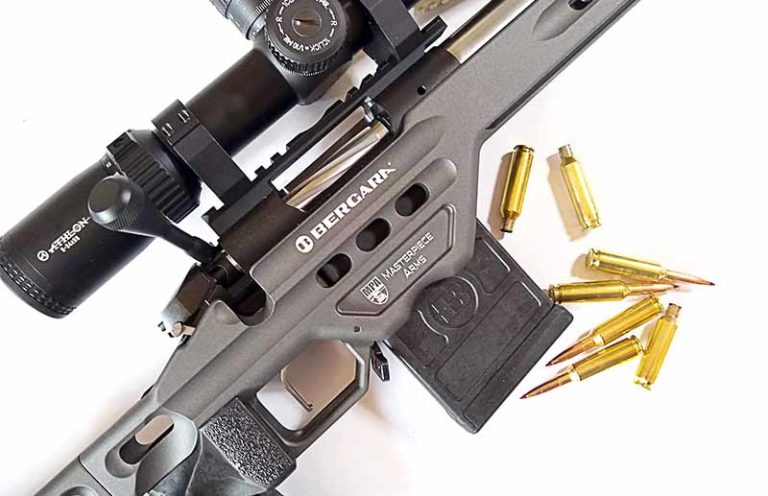
If you have money to burn, there are some fine quality heaters out there you can spend it on. Here we take a look at a few models from Bergara, Manurhin and more.
Here’s a statement that should shock absolutely no one: l like affordable guns. Earthshattering, I know. But the great thing about making that statement is it pretty much means I celebrate the greater swath of the American gun market. If you have, say, $1,000 burning a hole in your pocket, then chances are good that you can ferret out a pretty solid pistol, rifle or shotgun—even a double barrel—to fit your need and serve you well.
All that said, this doesn’t mean I or any other red-blooded American shooter doesn’t wipe away a bit of drool when eyeing high-end heaters. For most of us, the better part of the top shelf will remain prohibitive. Perhaps we’ll have enough wherewithal to squirrel away enough nickels and dimes to put one—maybe two—absolute gems in the ol’ gun locker. Or, maybe, slim as the chance is, your lottery numbers will come up and you can collect the whole lot. Whatever the case might be, even if your bank account gasps at the irons you eye, there’s no reason to stop looking and hoping.
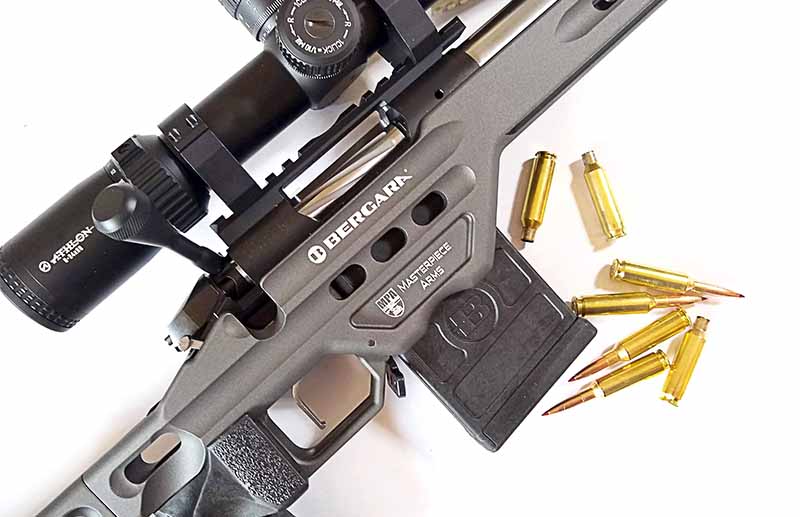
Making A List
Honestly, if you have the money, the sky is the limit for what you can spend on a firearm. The best guns of the Purdey and Holland & Holland stripe push into the six-figure range, and you can dump a load of money on a custom job to make it one of a kind.
Here, we’re not so concerned with turning a run-of-the-mill Kalashnikov into a unique shooter via a Saddam Hussein gold plate special. Instead, we’re going to delve into the world of excellent production and semi-custom guns that cost a mint but are worth every penny. These guns, in many cases, are best in class and, while not utterly unique to the user’s specification, are rarefied in price and performance.
Bergara Premier Competition Rifle
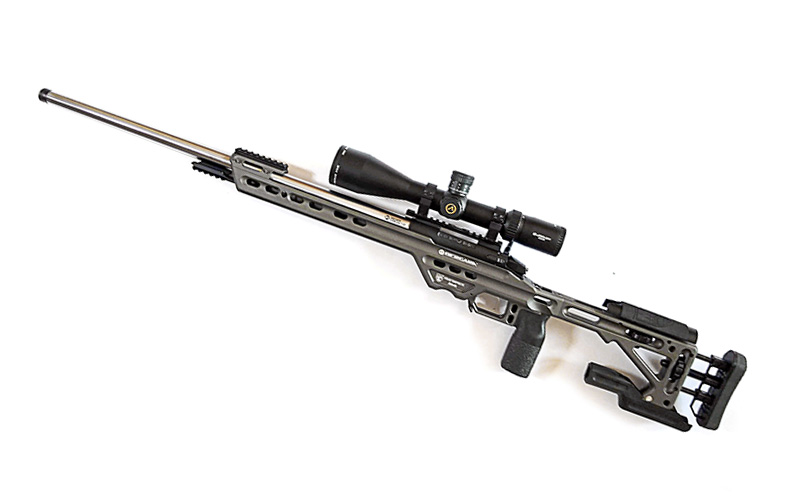
I’ve long been impressed by what Bergara brings to the table in nearly all of their rifles. This was further fortified with its recent venture into dedicated long-rang competition rigs. Honestly, at $2,750, the Premier Competition Rifle (PCR) would fall into the Production Class of PRC competition, but it vastly over-delivers as far as off-the shelf rifles are concerned. Once dialed in, I had a 6mm Creedmoor iteration of the rifle poking cloverleaves at 100 yards, with few groups pushing over ½ MOA at that range.
Bergara’s barrel-making expertise is on full display with the chassis rifle, a 26-inch heavy (No. 7 profile) stainless and button-rifled affair with an absolutely flawless bore. As its name suggests, the fire tube is mated to the company’s excellent Premier action, a nearly enclosed unit that’s still wide enough to breech feed. The bolt is spiral fluted with an oversized tactical handle and has one of the smoothest throws I’ve felt on a production rifle. Thank the floating head and tapered lug for this and the absolutely flawless feed.
As nice as Bergara’s end of the build is, what sets the rifle apart from many in its class is its Masterpiece Arms (MPA) Short Action Chassis. Particularly pleasing is the 90-degree grip, which positions the finger dead nuts on the TriggerTech Remington 700 Primary fire control’s straight shoe, making repeatable breaks natural. By the way, that baby broke consistently at 1.6 pounds, according to my Wheeler scale when I dialed it all the way down. But also worth mention is the chassis’ ARCA Swiss rail, which allows a bipod much more leeway in positioning—even on the fly. This is just the tip of the iceberg on the PCR, but let it be said: Even at its fairly hefty price, it still comes in at a value.
Christensen Arms Modern Precision Pistol
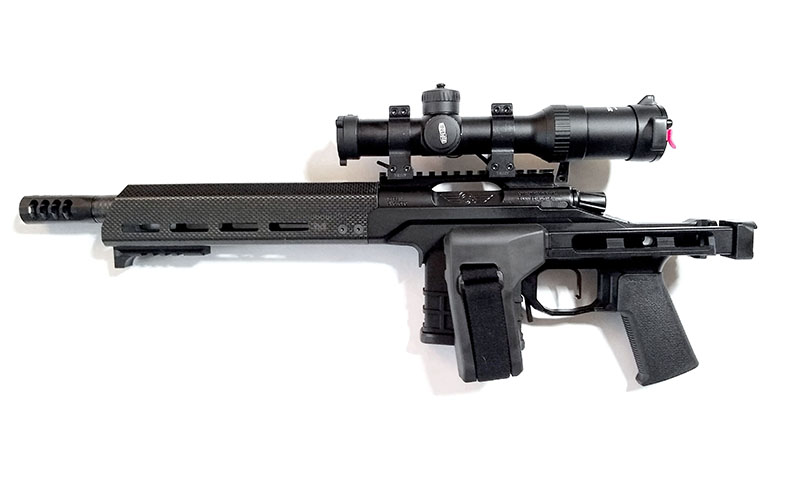
I will fully admit that this is the oddball of the roster because, well, who the heck wants a bolt-action pistol? The same thought went through my mind when I unboxed the Christensen Arm’s shorty. Then, I got behind the brace and … wow!
Fully deserving of the moniker “tack driver,” the Modern Precision Pistol (MPP) might be the ultimate truck/ranch gun. I pulled the trigger on the 10.5-inch-barreled .223 Remington variation, and after turning out group 1 MOA or below at 100 yards, I walked away impressed. Yeah, the barrel length might make it dicey as a dedicated predator gun, but for the quick shot at uneducated coyotes when driving the back forty, it’s dead on. Plus, at an outright svelte 4.4 pounds—thanks to its carbon-fiber-wrapped stainless steel barrel—the pistol has all the makings of backcountry insurance (in its heavier calibers) that’s guaranteed to hit the target.
Interestingly, the little chassis rig runs fast if you’re not afraid to get aggressive on the bolt. A straight handle that comes off the chassis allows for the hand to find it quickly, but the 60-degree throw allows you to run an optic with a larger ocular bell. An enlarged ejection port clears bass quickly yet allows a fast top-off from the breech if the situation calls for it. And a straight-shoed, adjustable TriggerTech trigger has as crisp a break as you could desire, helping hits come through.
Now, the .223 isn’t a mauler in the recoil department. That said, the adjustable side-baffle brake included kept the MPP nearly dead still shot to shot—though, it made the gun a bit barky. It’s truly a fun gun and, for the right shooter, very practical … for $2,400.
Manurhin Gendarmerie
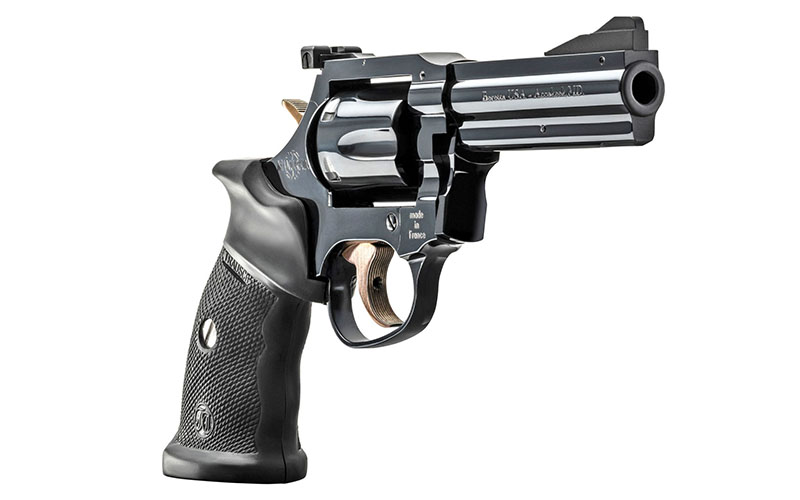
Honestly, some of the appeal of this revolver is due to its colorful history. But the Beretta import isn’t purely living off its résumé as the sidearm of choice for the French Groupe d’intervention de la Gendarmerie Nationale.
Specially designed for the elite counter-terrorism unit, the gun is at once match accurate and tough as nails. Some of the .357 Magnums have survived past the quarter-million round mark, which even with its $3,600 price tag works out to around $0.01 per trigger pull. Money well spent.
There’s plenty to like in the Manurhin’s durability, but more so in its performance. The trigger especially merits comment. The revolver’s triple adjustable trigger not only features a built-in overtravel screw but also a hammer force adjustment screw and a hammer spring weight adjustment screw. The latter features are built into the frame and offer a shooter more control over the performance of the trigger than most revolvers on the market.
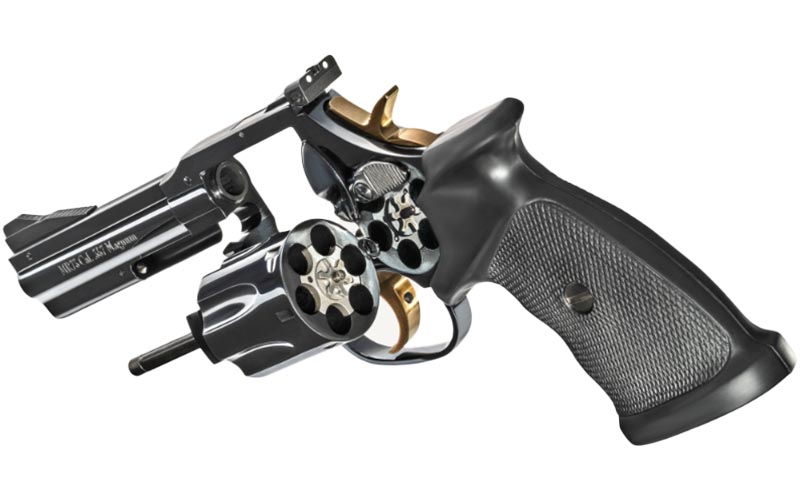
Furthermore, aspects I enjoy include the Jacques Trausch-designed grips. Ruger fans might recognize them, given he produced a model for the SP101, and they do the same sort of number on the Manurhin, cutting the felt recoil and improving the control over the revolver. The unique design also makes a fundamental high grip very natural and is deftly shaped to the shooter’s hand, providing plenty of comfort.
Of course, the revolver comes with all the little extras expected in this class of firearm, such as fully adjustable rear sights and stunning aesthetics. It’s also available in a 5.25-inch-barreled Sport model and 4-inch Gendarmerie version. I prefer the latter, simply because it’s slightly more “Mama Bear”—the potential for concealed carry is there. Overall, shooters should walk away pleased with either model.
Merkel Helix
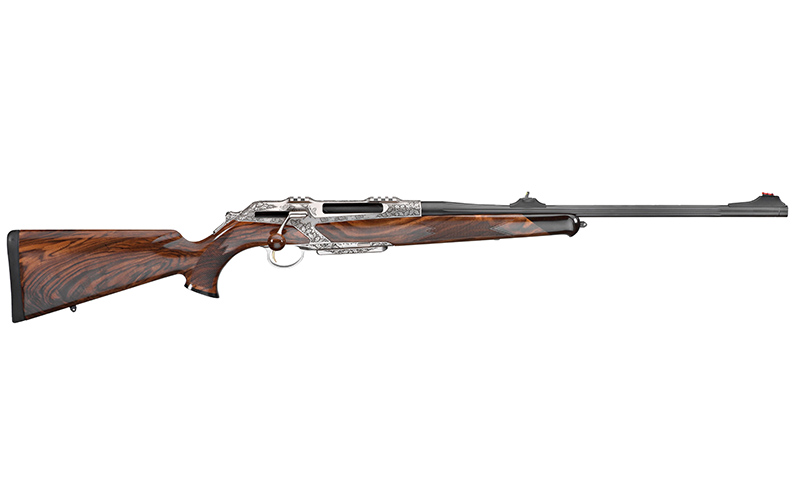
Full confession up front: I’ve always had a thing about straight-pull rifles, and feel it’s a shame these innovative irons haven’t had greater popularity stateside. I blame the lever action.
Yet, if I was squirreling away money for a top-flight hunting rifle, a straight-pull would top the list. There’s no two ways about it; there’s just something about the Helix. Perhaps it’s because Merkel figured out how to endow the unique style of rifle with an action that’s nearly as strong as a traditional bolt-action, while keeping the action as fast as ever. And boy, is it fast.
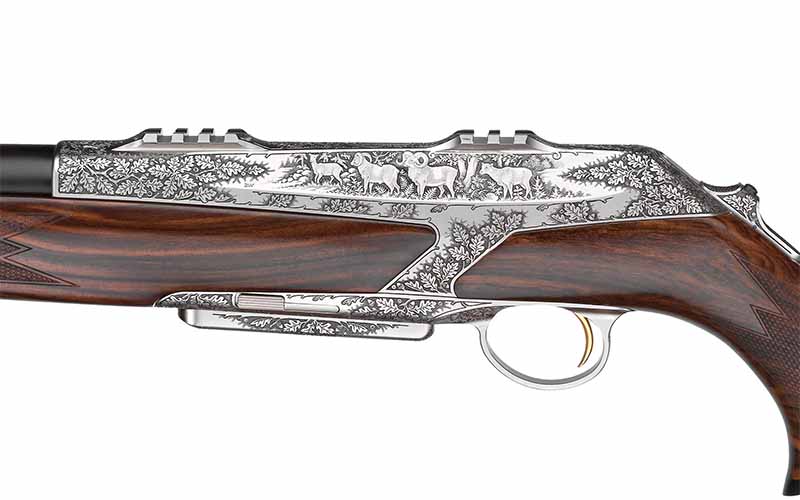
The bolt travel is a mere 2.5 inches, yet the carrier moves a full 4 inches, thanks to the innovative Teutonic engineering under the hood. And it’s completely linear, unlike some designs that slightly cant upon closing to lock the lugs. As to holding up to hot rounds, the six-lug head—similar to the Weatherby Mark V system—holds tight.
Another feature of the Helix, generally not popular in America, is it’s a switch barrel (takedown, too). While not a must-have for me in an exclusive rifle, I like the concept. What’s wrong with having a do-all hunting gun, one you can take a deer in the morning with a .30-06 Springfield barrel and coyotes in the evening with a .243 Winchester tube? It’s more sensible, in some respects, than having two calibers of the same model rifle—plus, the benefit of the same consistent fit and performance trigger pull to trigger pull.
As far as finishing touches, at least with the more exclusive deluxe model Helix, it offers a bit of soul to the hunter. Sticked in Grade 7 Turkish walnut and better, it looks like it’s meant for the woods. Plus, you get to pick three animals to have engraved on the receiver, an almost unheard-of option in what still classifies as a production gun. All that said, the rifle will set you back about $3,300.
Browning Citori White Lightning O/U SHOTGUN
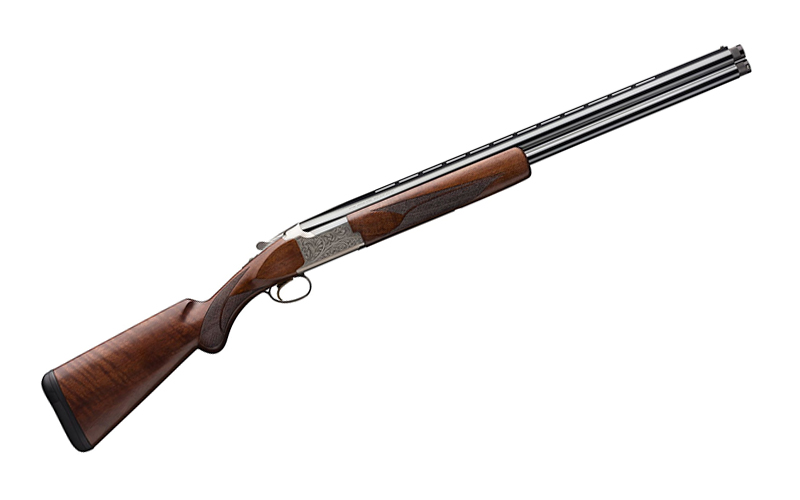
The pride of my father’s gun collection were his Belgian-made Browning Superimposed Broadway and Lightning. A predilection for hunting, I was always fonder of the latter. Thankfully, the field gun soldiers on—now under the banner of Citori—and while churned out in a different corner of the world might be better than ever. B.C. Miroku of Japan has turned out the time-tested design since the early 1970s, more than enough time to work out any bugs. And it shows with the White Lightning.
Admittedly, this iteration is a pretty standard-fare Citori, only the receiver undergoes Browning’s silver nitride coating process instead of bluing. The results speak, I believe, for themselves, giving the over-under a beautiful contrast among the receiver, barrels and walnut stock.
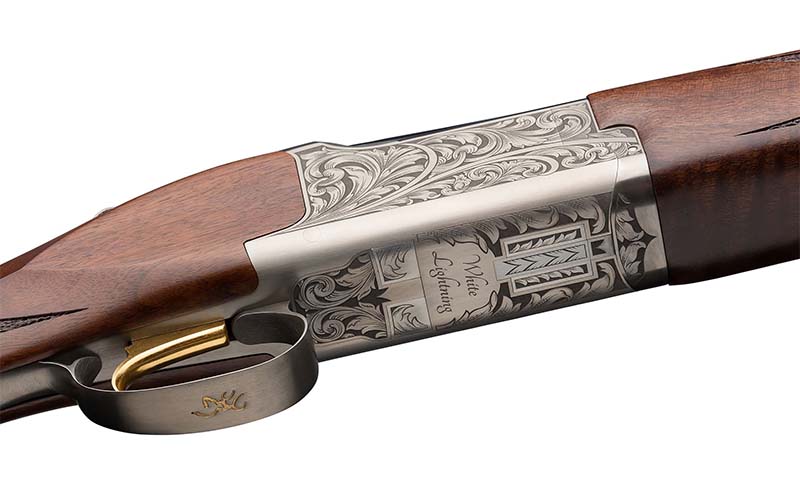
The shotgun is very intuitive to the shoulder, with a ¼-inch-wide straight-side vented rib drawing the eye to the front sliver bead. I prefer the 26-inch-barreled model (in 12-gauge), compared to the 28-inch model, for easy carry and moving the fulcrum of the gun back slightly. The stock is nicely shaped, with a round knob pistol grip and ample forend, each well checkered.
And the gun boasts a dynamite trigger, breaking a bit over 4.5 pounds on each barrel. On this point, like all Citoris, the White Lightning the trigger is inertia driving, using the recoil of the first shot to set the hammer for the second. Though, a barrel selector on the tang allows you to quickly switch tubes, thus chokes—if you set them up separately. The Citori is the well-worn path of this list; it’s very familiar and comfortable. It’ll set ya back about $2,800, but do you want anything else out of a field gun?
Editor's Note: This article originally appeared in the March 2022 issue of Gun Digest the Magazine.
More High-Rolling Heaters:
- Manurhin MR73: Famous French Revolver Heads Stateside
- Gun Review: Bergara LRP Elite Rifle
- First Look: Bergara Premier Competition Rifle
- Browning Citori High Grade 50th Anniversary

Next Step: Get your FREE Printable Target Pack
Enhance your shooting precision with our 62 MOA Targets, perfect for rifles and handguns. Crafted in collaboration with Storm Tactical for accuracy and versatility.
Subscribe to the Gun Digest email newsletter and get your downloadable target pack sent straight to your inbox. Stay updated with the latest firearms info in the industry.

![Best Concealed Carry Guns In 2025 [Field Tested] Wilson Combat EDC X9S 1](https://gundigest.com/wp-content/uploads/Wilson-Combat-EDC-X9S-1-324x160.jpg)


![Best 9mm Carbine: Affordable PCCs [Tested] Ruger Carbine Shooting](https://gundigest.com/wp-content/uploads/Ruger-Carbine-Shooting-100x70.jpg)
![Best AR-15: Top Options Available Today [Field Tested] Harrington and Richardson PSA XM177E2 feature](https://gundigest.com/wp-content/uploads/Harrington-and-Richardson-PSA-XM177E2-feature-100x70.jpg)
